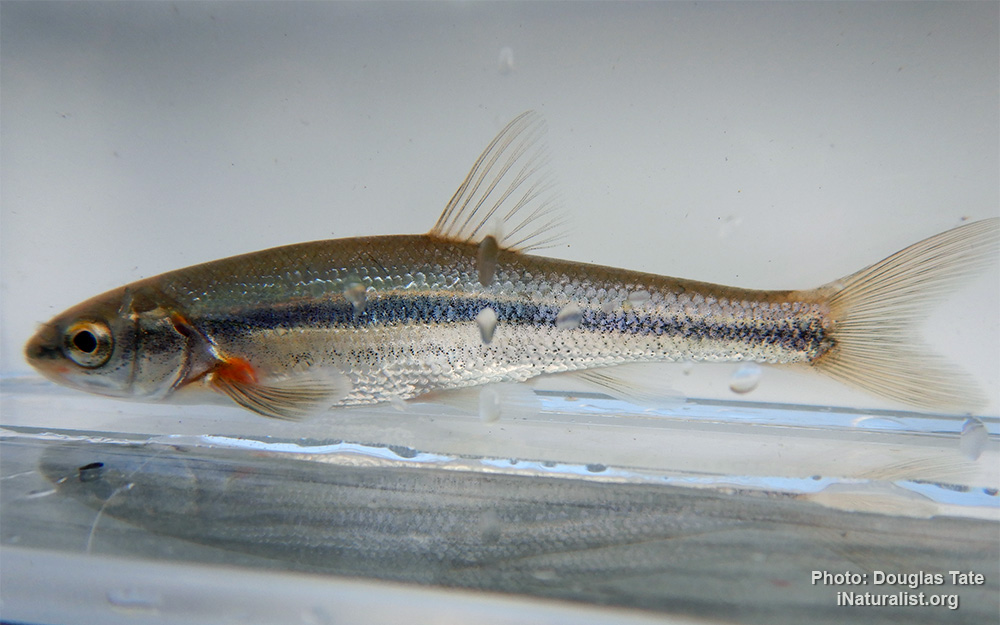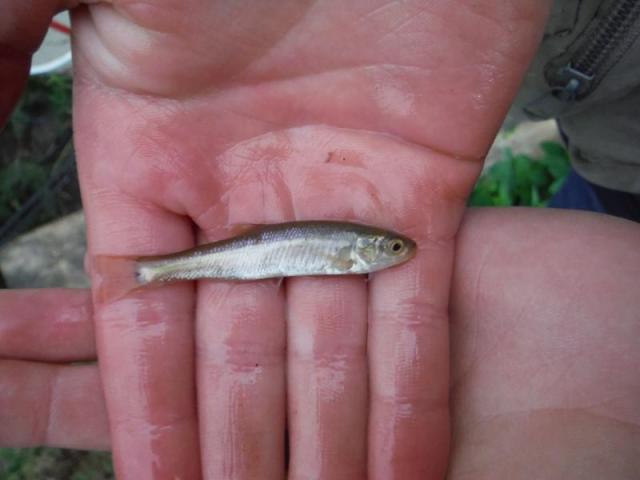Lake chub
(Couesius plumbeus)

Classification
General data
The lake chub (Couesius plumbeus) is a freshwater cyprinid fish found in Canada and in parts of the United States.
Of all North American minnows, it is the one with the northernmost distribution.
Its genus, Couesius is considered monotypic today. The genus was named after Elliott Coues, who collected the holotype specimen.
The body is fusiform and somewhat elongate.
It is usually 100 to 175 mm (4 to 7 in) long, where the maximum length is approximately 225 mm (9 in).
The back is olive-brown or dark brown, and the sides are leaden silver, hence the word plumbeus, referring to lead, in the scientific name of this fish. The snout is blunt and projects slightly beyond the upper lip. The corners of the mouth each bear a small barbel. The scales are small but well visible, and some may be black and form isolated dark spots on the lower sides.
The dorsal, pelvic and anal fins each have 8 rays. The pectoral fins are broad and have 13-18, but more usually 15-16, rays. The fish has no teeth, adipose fin, or spines.
The mouth is relatively small and the tail is forked. Breeding males can develop patches of bright orange or red at the base of the pectoral fins and sometimes near the mouth, and small nuptial tubercles on the top of the head, dorsal surface of pectoral rays, and on the belly near the base of the pectorals. The juveniles are similar to the adults, but have less obvious mottling or stripe. The females are typically larger than the males.
The lake chub is generally found throughout Canada up to the Arctic Circle. Some scattered populations are also present in the northern United States, more precisely in New England, Michigan, Iowa, Wisconsin, Minnesota, the Dakotas, Montana, Wyoming, Colorado, Washington, Idaho and Utah.
The lake chub is also the only minnow known to live in Alaska. Its range also includes Lake Michigan in Illinois and the Platte River system in Wyoming. There are relict populations of the lake chub in the upper Missouri River drainage.
As its common name implies, the lake chub is most commonly found in cold-water lakes with clean gravel, and it can also live in cold-water rivers and streams. It often lives in shallows, but during mid-summer, it may move to the deeper parts of a lake to avoid the warmer waters of the lake shore.












